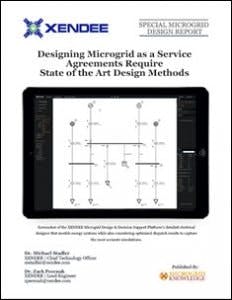A new white paper from Xendee looks at why designing microgrid as a service (MaaS) agreements requires state of the art design methods and comprehensive mathematical optimization techniques.
Get the full report
Microgrids are complex systems that integrate different generation sources and deliver a variety of value streams. Plus, every system is different in terms of the geography, regulations and components. “Designing and controlling such systems has moved well beyond simple spreadsheet calculations combined with rules-of-thumb and simulations,” according to the paper. “Instead, optimal decision-making tools, which can look at the system holistically when making a lifetime plan and determining operation, are the only option and are needed to answer the complex microgrid design and operational problems.”
The paper adds that “in order to capture the project holistically, it is necessary to use modeling tools which can plan around future changes in a reliable, fast and easy way.” These complex modeling tools allow the microgrid solution to adapt to changes in demand and aging technology, while also providing the operator with multiyear financial projections. With a comprehensive modeling tool, this can be done within minutes, whereas the traditional approach can take weeks and may not consider future changes.
“Ignoring financing terms, multiyear changes or accurate system operation will provide a suboptimal system and leave money on the table. Worse yet, it can lead to projects that violate contractual agreements and produce projects severely in the red.” — Xendee, “Designing Microgrid as a Service Agreements Requires State of the Art Design Methods“
The authors also explain why it’s crucial that the model and calculations consider the various forms of financing that may be used by the project. A system where these elements aren’t considered together often leads “to a disconnected design process where the technical design is iterated alongside a financial spreadsheet to attempt to find a happy medium solution that neither was designed for.” The paper includes several illustrations and charts to explain the methodology behind Xendee’s modeling system. The authors also explain how long term financing influences design results, the technology portfolio and the various revenue streams of a microgrid.
Download the full report, “Designing Microgrid as a Service Agreements Requires State of the Art Design Methods” to learn more about how Xendee’s comprehensive mathematical optimization techniques can ensure that your MaaS system is set up for success.








